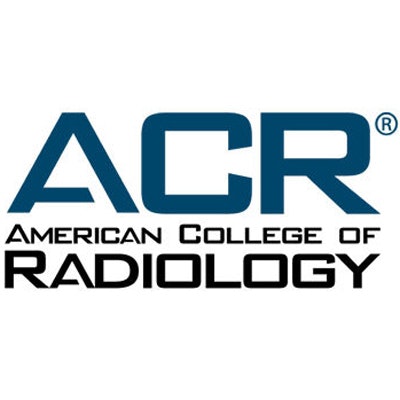
After years of representing the American College of Radiology's (ACR) interests before Congress and the federal bureaucracy, Executive Vice President Cynthia Moran has learned to accurately gauge the significance of major events affecting federal healthcare policy and medical imaging practice.
From her perspective, the opportunities and threats posed by President Donald Trump's promise to repeal and replace the Affordable Care Act (ACA) did not end with the failure to get a vote on the proposed American Health Care Act (AHCA) in the U.S. House of Representatives. In an interview with Advocacy in Action eNews, Moran considers the most likely future direction for healthcare reform and ongoing policies and programs that remain relevant to the college's advocacy efforts and its members.
AIA: What is the general feeling in Washington, DC, since the withdrawal of the proposed American Health Care Act?
Moran: People are licking their wounds and trying to figure out what's next. Often when this kind of collapse happens, the unforeseen also happens. I wouldn't be surprised if there isn't an effort at some point this year to pick up the pieces with another run at repeal and replace legislation. This time, the House conservatives could possibly be in a weaker position to sabotage their leadership. The question would be whether the Senate could cobble together a package with some Democratic support to get to the finish line. The House would need to follow with its support. This would be next to impossible in a good year, with a White House and united Congress, and it will be even harder this year, given the current dynamic in Washington. But I never say never.
In addition, the White House and Congress have to deal with other issues that surround healthcare and the function of the government. They'll need to raise the debt limit and pass a budget or continuing resolution to fund the government. The State Children's Health Insurance Program (SCHIP) comes up for reauthorization early this fall. Legislation for its renewal could become a vehicle for broader Medicare reform and nonpartisan health policies.
What did concerns about the preservation of "essential health benefits," the mandated set of 10 insurance coverages, including preventive services in the ACA, say about congressional recognition of their importance as a consumer protection?
It was the removal of those requirements from the AHCA legislation that lost the support of Republican moderates in the House. It is noteworthy that coverage requirements for mammography, CT colonography, CT lung cancer screenings, and other preventive services were never controversial. There was opposition to some of the nine other elements of the essential health benefits, which included hospitalization, maternity care, laboratory services, pharmaceuticals, things like that. The very definition of health insurance is embodied in several of those essential health benefits, but they became very difficult to keep in the bill when House Speaker Paul Ryan and President Trump negotiated for votes before the AHCA was withdrawn from consideration.
What are the ACR advocacy priorities moving forward?
Implementation of the Medicare Access and CHIP Reauthorization Act (MACRA) is moving forward with options for radiologist participation in the Merit-Based Incentive Payment System (MIPS) and alternative payment models (APMs) to integrate quality performance into the calculation of Medicare reimbursement. This remains priority No. 1 for the ACR. This is the data collection year. We're helping our members with our "Be MACRA READY" resources web page, webinars for practicing radiologists and small and rural practices, and information and advice in the Journal of the American College of Radiology, Advocacy in Action eNews, and the upcoming MACRA/Quality Payment Program Workshop at ACR 2017 in May.
Screening mammography is included under the essential health benefits mandated for private insurance coverage under the ACA as a Health Resources and Services Administration-supported mandated benefit. It is also eligible to be included due to a federal mandate that 2002 U.S. Preventive Services Task Force (USPSTF) guidelines be recognized as policy -- rather than those of 2009 and 2016. The Consolidated Appropriations Act of 2016 extended this protection until January 1, 2018. We want to make sure that this mandate is maintained in any relevant healthcare legislative language moving forward. That will be a major focus.
Medicare site-neutral payment changes could become a huge legislative issue that could negatively affect the diagnostic imaging community. We are closely monitoring that issue. We are also looking at the Department of Veterans Affairs health program and helping to modernize its health information technology capabilities with clinical decision-support tools, such as what we achieved in the Protecting Access to Medicare Act of 2014.
If there are efforts to get rid of things like the Independent Payment Advisory Board (IPAB, an independent panel authorized by the ACA to control Medicare expenditures), we will be very involved with that. If malpractice reform is addressed, we would be very involved with that as well.
Our government relations staff has to be wary of any mischief that might pop up while Congress addresses these "must-pass" bills, like raising the debt ceiling and agreeing on a federal budget or a continuing resolution to fund the government. These will probably be straight passes or extensions, but we have certainly been around long enough to know that things detrimental to radiology can sneak in.
The Trump administration has said repeatedly that there are multiple ways to address healthcare reform. Legislation is one. Federal regulation is another. This is where we will have to be vigilant in detecting and responding to potentially onerous regulatory proposals.
Our economics department is monitoring the U.S. Centers for Medicare and Medicaid Services to ensure that mandatory use of computer-assisted decision support using validated imaging appropriateness criteria is implemented, as Congress required.
What's the bottom line of "repeal and replace" for the ACR and radiology?
There is going to be a lot activity in healthcare reform, though this one effort failed miserably as far as the White House and the House of Representatives leadership are concerned. There will be opportunities for it to be reshaped and to come back again as legislation. But there will be lots of opportunities for the administration, using its current authority, to make significant changes in the existing Affordable Care Act and also going forward with regulatory reforms that could impact radiology.
Reprinted with permission of the American College of Radiology from the March 31, 2017, edition of Advocacy in Action eNews.
Copyright © 2017 American College of Radiology



















